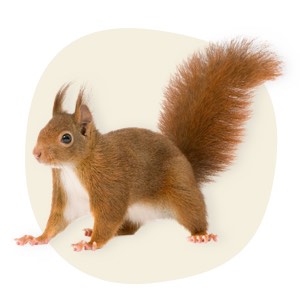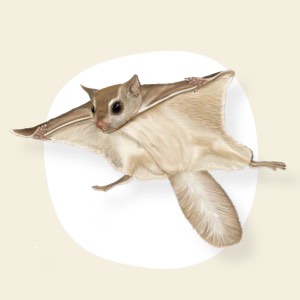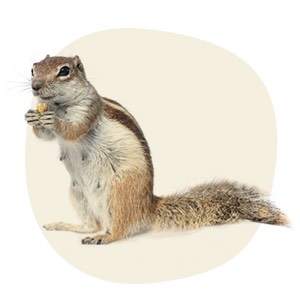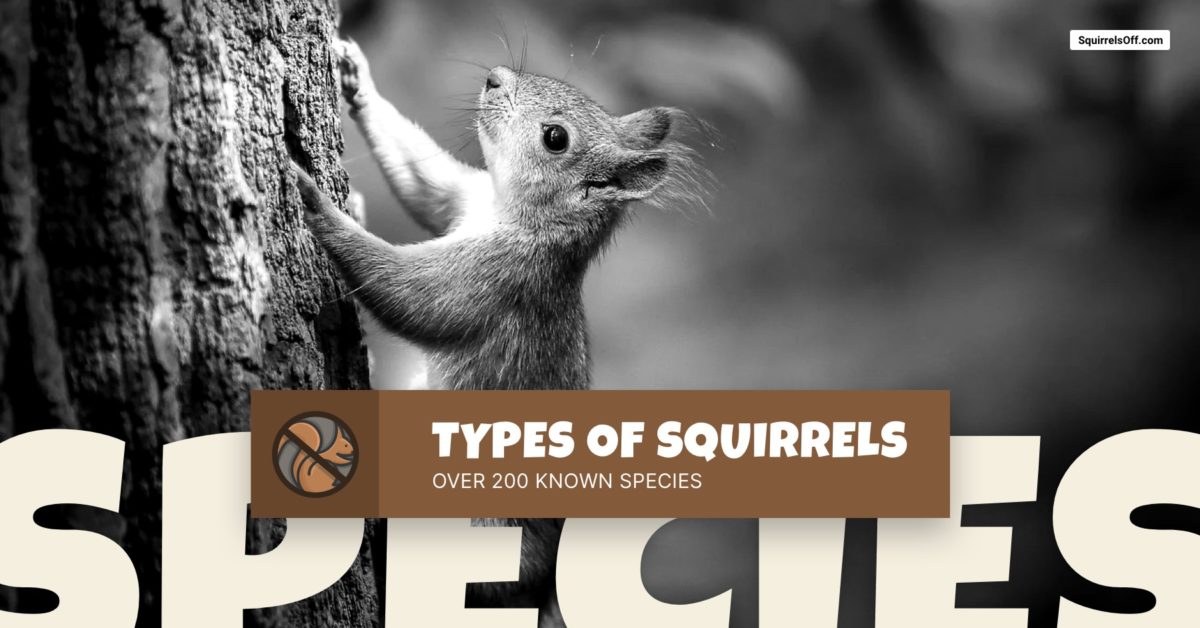While most people wouldn’t put much thought into the squirrels they pass by each day, scurrying up a tree, or chasing one another in the treetops, squirrels are a helpful, diverse member of the Sciuridae family. In fact, there are over 200 known species of squirrel worldwide, with at least 30 of those residing in North America, alone. However, while they tend to be a nuisance to homeowners, especially those maintaining bird feeders, it is helpful to understand a squirrel’s habits to preserve feed, and keep birds happy.
Squirrels are divided into three main categories, including: tree squirrels, flying squirrels and ground squirrels. Each type is overwhelmingly dependent on their habitat for survival, which protects them from their natural predators. The most notable subspecies of all three types is the Gray Squirrel (a tree squirrel), mostly because of it’s sheer size. Gray Squirrels are native to the western half of the United States, and typically inhabit deciduous forests. It is rather common to find Gray Squirrels, alongside other squirrel subspecies, living in residential areas sporting fewer trees, less competition, and more freely available food. This is because of the sheer lack of predators residing in neighborhoods, which makes areas such as attics and basements more appealing to these little mammals.

Tree squirrels spend most of their time among the trees, often favoring areas featuring hardwoods or nut-bearing trees, where they may gather food with ease. In addition to being a convenient food source, trees provide squirrels with shelter. More often than not, squirrels will utilize nearby branches, branch forks, or even hollows in which to build their nest. Tree squirrels tend to find safe harbor by living in treetops, especially from: bobcats, cats, foxes, snakes, and more. While they are diurnal, tree squirrels enjoy a diet of berries, nuts, seeds, and fungi, to name a few.

Flying squirrels, although incapable of bird-like flight, are highly-efficient at gliding from one tree to another, throughout the forest. A membrane, known as the patagium, allows them to utilize wrist bones by which they control the height, and direction of their flight. Whether they are completing a split-second maneuver to escape danger, or simply trying to travel from one tree to another, flying squirrels utilize leaps, fine-tuned stability, and other learned techniques to overcome everyday obstacles. Oddly enough, flying squirrels are mostly nocturnal, and feed upon an omnivorous diet (e.g., fruit, seeds, tree sap, bugs, bird eggs, etc.).

Ground squirrels tend to occupy prairies, open hillsides, pastures, and more. This is mostly because ground squirrels live within vast underground burrows, sometimes as much as 6 foot deep. While they are perfectly capable of climbing trees, ground squirrels prefer to run toward the safety of a familiar burrow, and hide within one of it’s many, long tunnels. Well-known squirrels within this category include: Eastern chipmunks, prairie dogs, and even groundhogs. Ground squirrels are also diurnal, and consume a diet rich in fruits, fungi, nuts, seeds, and even bugs. This type of squirrel is most frequently preyed upon by eagles, rattlesnakes, weasels, and more. However, ground squirrels utilize various techniques in order to avoid death by venomous snakes, even going as far as to feed shed skin to their young.
As a whole, squirrels of all types play a crucial role in the environment – especially in regard to forest regeneration. Because tree squirrels in particular routinely bury seeds and nuts across the forest floor, they inadvertently provide the opportunity for new trees to develop, by way of food caches. And, since it is relatively common for a squirrel to forget about previously hidden food, seeds are thereby given the chance to sprout. This means new types of trees are commonly introduced into any given forest, due to the variation of nuts squirrels may hide away for winter. Over time, in addition to regeneration, a squirrel’s forgetfulness leads to more diversified, ever-expanding forests.
One misunderstood fact about squirrels, is that their body temperature tends to remain stable year-round. Thanks to a type of thermoregulation known as homeothermy, most squirrels won’t ever have the need to hibernate in their lifetime. The idea that tree squirrels require hibernation is purely myth, due to the observation of squirrels becoming less active during the winter. In fact, some types of squirrels have a breeding season specific to the colder months of the year, in addition to a summer breeding season. It is actually more likely for squirrels to experience a short length of inactivity during hot summer months, lasting a few days to a few weeks, often referred to as estivation. However, while it may be true for tree-dwelling, and flying squirrels, the majority of ground squirrels will remain completely inactive throughout the winter – especially in areas such as Alaska.
Benjamin Franklin once coined the term: “an ounce of prevention is worth a pound of cure”, which is certainly true for squirrels of all sorts. Homeowners tend to view all types of squirrels as pests, rather than useful mammals, in need of prompt relocation, or complete eradication. It is rather common for tree squirrels to go as far as to take up residence within houses, especially in structures with easily accessible spaces providing a dark, dry, and warm environment – ideal situations for nesting. Unfortunately, this will inevitably lead to the chewing and gnawing of exterior/interior walls, damage to wiring and cabling, and more.
In addition to possible structural damage throughout residential areas, squirrels pose a threat to bird feeders, as well as their guests. Did you know squirrels are capable of eating up to one pound of food per week, per individual? Protect your birdseed, enjoy your birds and prevent squirrels from invading your feeders, by investing in squirrel-proof bird feeders before squirrels become an overwhelming problem. Featuring a wide variety of inexpensive, harmless techniques, homeowners can easily repel and prevent squirrel intrusions with squirrel-proof feeders, and spend more time enjoying their birds.
- 10 Ways to Squirrel Proof a Bird Feeder - February 7, 2020
- How to Keep Squirrels Out Of Bird Feeder - January 2, 2020
- How To Get Rid Of Squirrels - January 1, 2020

